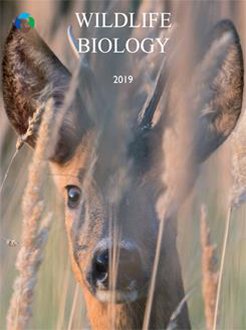In Eurasia, forest grouse have been declining throughout most of their geographical ranges. Presumably, poor recruitment due to high predation of nests and chicks is one important causal factor. In a southeastern Norwegian forested landscape (Fjella), we provided diversionary food to predators – directed mainly at the red fox Vulpes vulpes – during the nesting and early brood season of capercaillie Tetrao urogallus and black grouse T. tetrix in three nearby areas. In Eidsberg, where populations were censused during 33 years (1985–2017), food was provided during the last 22 years. In two other areas, a six-year experimental program was conducted (2003–2008) by providing food in one area for three years, then switching feeding to the other area for three years. During May and June, 10 kg of food – mainly moose offal and ungulate carcasses – was deposited at feeding stations once a week. In Eidsberg, black grouse breeding success increased by 43% after feeding was initiated, mainly due to larger brood sizes. In capercaillie, overall breeding success tended to increase, solely due to more females successfully rearing chicks. In the experimental areas, feeding increased breeding success an estimated 57% in black grouse. In capercaillie there was also a tendency for a positive effect, but sample sizes were too small for statistical inference. No increases were detected in adult birds. However, in capercaillie, increased breeding success after feeding led to a significant skew in sex ratio favouring males. A similar tendency in black grouse suggested source–sink dynamics and a net loss of young females during natal dispersal. We conclude that diversionary feeding of foxes in spring and early summer might be a feasible management tool to increase the reproductive output in local grouse populations, but that it needs to be implemented on a larger scale in order to improve breeding numbers.
How to translate text using browser tools
18 September 2019
Diversionary feeding of red fox in spring increased productivity of forest grouse in southeast Norway
Mats H. Finne,
Per Kristiansen,
Jørund Rolstad,
Per Wegge

Wildlife Biology
Vol. 2019 • No. 1
2019
Vol. 2019 • No. 1
2019
black grouse
boreal forest
Capercaillie
predator control
reproduction




